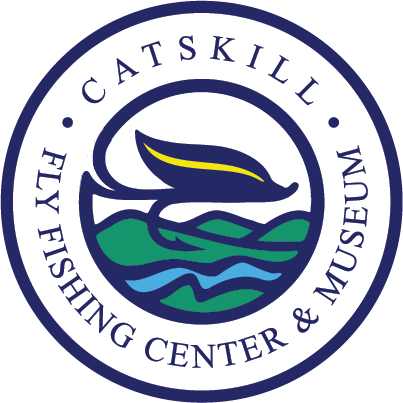The Esopus River
Map courtesy of Austin “Mac” Francis from his book Land of Little Rivers
The Esopus is the most hospitable of the Catskill rivers. Some who know its often muddy and turbulent waters may wonder why. Simply, the Esopus welcomes all comers.
It was home to the Algonquin tribe, who chose its gentler valley over those of the Beaverkill, the Willowemoc, and the Neversink, into all of which they traveled to hunt. The name Esopus was first given to the stream by the Dutch settlers. It was their version of the Algonquin word for “small brook”. The name was so successful – perhaps because it sounds so nearly like a stream itself – that Esopus became the name also of the Indian tribe and then of all the land in the valley.
As the most accessible Catskill river from New York City, Espous Creek was among the first to open its doors to visiting fishermen. In 1830, as sport fishing was just beginning to catch on in this country, the Esopus already had a boardinghouse, run by Milo Barber in Shandaken, which catered to anglers from the city.
Tremper House had many novel attractions as a resort hotel, including elevators, steam heat, bathrooms, and even a resident physician. Dr. H.R. Winter was an ardent fisherman “who often prescribed a course of trout fishing for businessmen wearied in the pursuit of dollars…and he was as ready wtih advice on trout flies and rods as he was with pills and powders.”
Happily for anglers, the Esopus extended its hopsitality to the rainbow trout. Although there are large wild rainbows in the Delaware, and stories of bygone runs of rainbows up the Willowemoc, Esopus Creek is the only Catskill river in which rainbows have thrived since they were imported from Califirnia in the late 1800s.
In 1906, before the Ahokan reservoir or Shandaken Tunnel were built on the Esopus, Gordon observed in one of his Forest and Stream articles, “It is the only stream I know of where rainbow trout actually remained and multiplied for many years.” He also noted in the same article that if you stocked Catskill Streams with rainbows, “they might go to sea in the second year, but that is the risk on would have to run.”
As if in answer to Gordon, the very next year New York City began building the Ashokan Reservoir, the first in its Catskill water-supply system, and when it was finished in 1915, the rainbows of the Esopus had their own little private ocean to run down to feed, and grow in.
The Esopus was to have one more major physical change in order to provide New York City with water. In 1917, work started on Schoharie Reservoir, one valley to the north. To channel its water most efficiently into the supply system, the city hit upon an ingenious idea. It was customary to build an underground tunnel connecting two reservoirs; but someone noticed that Esopus Creek was direclty in line between the Schoharie and Ashokan reservoirs, and the Shankaken Tunnel idea was born. By running the tunnel only two-thirds of the way, surfacing at Allaben, and using the Esopus riverbed to carry Schoharie water the rest of the way to the Ashokan, approximately ten miles of burrowing and construction were saved.
On February 9, 1924, the first water was sent through Shandaken Tunnel, twenty-six hundred feet beneath Balsam Mountain, and Esopus Creek became a unique trout river, certainly in the Catskills, if not in the entire country.
More remarkable than its mand-made uniqueness, the Esopus conceals beneath its topography the remains of a suspected cataclysmic event that occurred nearly 400 million years ago and would lead to the creation of a river whose shape and flow are unlike any other in the Catskills. Viewed from a point directly above Panther Mountain, the Esopus headwaters and its main tributary, Woodland Creek, form a perfect circle six miles in diameter with Panter’s peak in the center.
About 1976, New York geologist Yngvar Isachsen – after disproving more likely explanations such as subsurface salt domes and granite masses – demonstrated that the probable cause of this unusual river shape was teh impact of an asteroid. As large as a half-mile across, the asteroid approached from the south and gouged out the crater whose rim is now the river’s course. Subsequent ocean-borne sediments, bedrock impactions, upheavels, and erosions created the Esopus we know today.
The above is excerpts from Land of Little Rivers by Austin M. Francis used with his permission and our gratitude.

